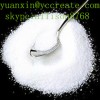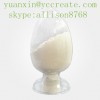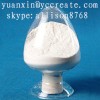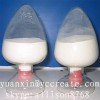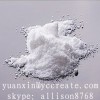Product Description
Alias: Booly Protection Compound 15, Pentadecapeptide, BPC 157
CAS: 137525-51-0
MF: C62H98N16O22
MW: 1419.53552
Purity: 99%
Appearance: White Lyophilized Powder
Place of Origin: China
Standard: USP
Certification: SGS
Method of Analysis: HPLC



Storage: Lyophilized peptides although stable at room temperature for 3 months, should be stored desiccated below -18° C. Upon reconstitution of the peptide it should be stored at 4° C between 2-21 days and for future use below -18° C.
pentadecapeptide BPC 157
Stable gastric pentadecapeptide BPC 157 (GEPPPGKPADDAGLV, M.W. 1419) may be the new drug stable in human gastric juice, effective both in the upper and lower GI tract, and free of side effects. BPC 157, in addition to an antiulcer effect efficient in therapy of inflammatory bowel disease (IBD) (PL 14736) so far only tested in clinical phase II, has a very safe profile, and exhibited a particular wound healing effect. It also has shown to interact with the NO-saystem, providing endothelium protection and angiogenic effect, even in severely impaired conditions (i.e., it stimulated expression of early growth response 1 gene responsible for cytokine and factor generation and early extracellular matrix (collagen) formation (but also its repressor nerve factor 1- A binding protein-2)), important to counteract severe complications of advanced and poorly controlled IBD. Hopefully, the lessons from animal studies, particularly advanced intestinal anastomosis healing, reversed short bowel syndrome and fistula healing indicate BPC 157s high significance in further IBD therapy. Also, this supportive evidence (i.e., no toxic effect, limit test negative, LD1 not achieved, no side effect in trials) may counteract the problems commonly exercised in the use of peptidergic agents, particularly those used on a long-term basis
Usage:
BPC 157 has a strong anti-inflammatory activity in both acute and chronic inflammation models. In fact, preliminary results in clinical trials suggest that BPC 157 may become an important therapeutic tool for the treatment of inflammatory bowel disease. BPC 157 was shown to accelerate wound healing and to have a marked angiogenic effect. In addition, it significantly facilitates the healing of bone fracture in rats. This peptide also exhibits an osteogenic effect significantly improving the healing of segmental bone defect. BPC 157 accelerates the healing of transected rat Achilles tendon and transected rat quadriceps muscle.
Pentadecapeptide BPC 157, composed of 15 amino acids, is a partial sequence of body protection compound (BPC) that is discovered in and isolated from human gastric juice. Experimentally it has been demonstrated to accelerate the healing of many different wounds, including transected rat Achilles tendon.
Application:
This study was designed to investigate the potential mechanism of BPC 157 to enhance healing of injured tendon. The outgrowth of tendon fibroblasts from tendon explants cultured with or without BPC 157 was examined. Results showed that BPC 157 significantly accelerated the outgrowth of tendon explants. Cell proliferation of cultured tendon fibroblasts derived from rat Achilles tendon was not directly affected by BPC 157 as evaluated by MTT assay.
However, the survival of BPC 157-treated cells was significantly increased under the H(2)O(2) stress. BPC 157 markedly increased the in vitro migration of tendon fibroblasts in a dose-dependent manner as revealed by transwell filter migration assay. BPC 157 also dose dependently accelerated the spreading of tendon fibroblasts on culture dishes. The F-actin formation as detected by FITC-phalloidin staining was induced in BPC 157-treated fibroblasts. The protein expression and activation of FAK and paxillin were determined by Western blot analysis, and the phosphorylation levels of both FAK and paxillin were dose dependently increased by BPC 157 while the total amounts of protein was unaltered.
In conclusion, BPC 157 promotes the ex vivo outgrowth of tendon fibroblasts from tendon explants, cell survival under stress, and the in vitro migration of tendon fibroblasts, which is likely mediated by the activation of the FAK-paxillin pathway.
Booly Protection Compound 15/Pentadecapeptide Bpc Polypeptide Pentadecapeptide Bpc 157








